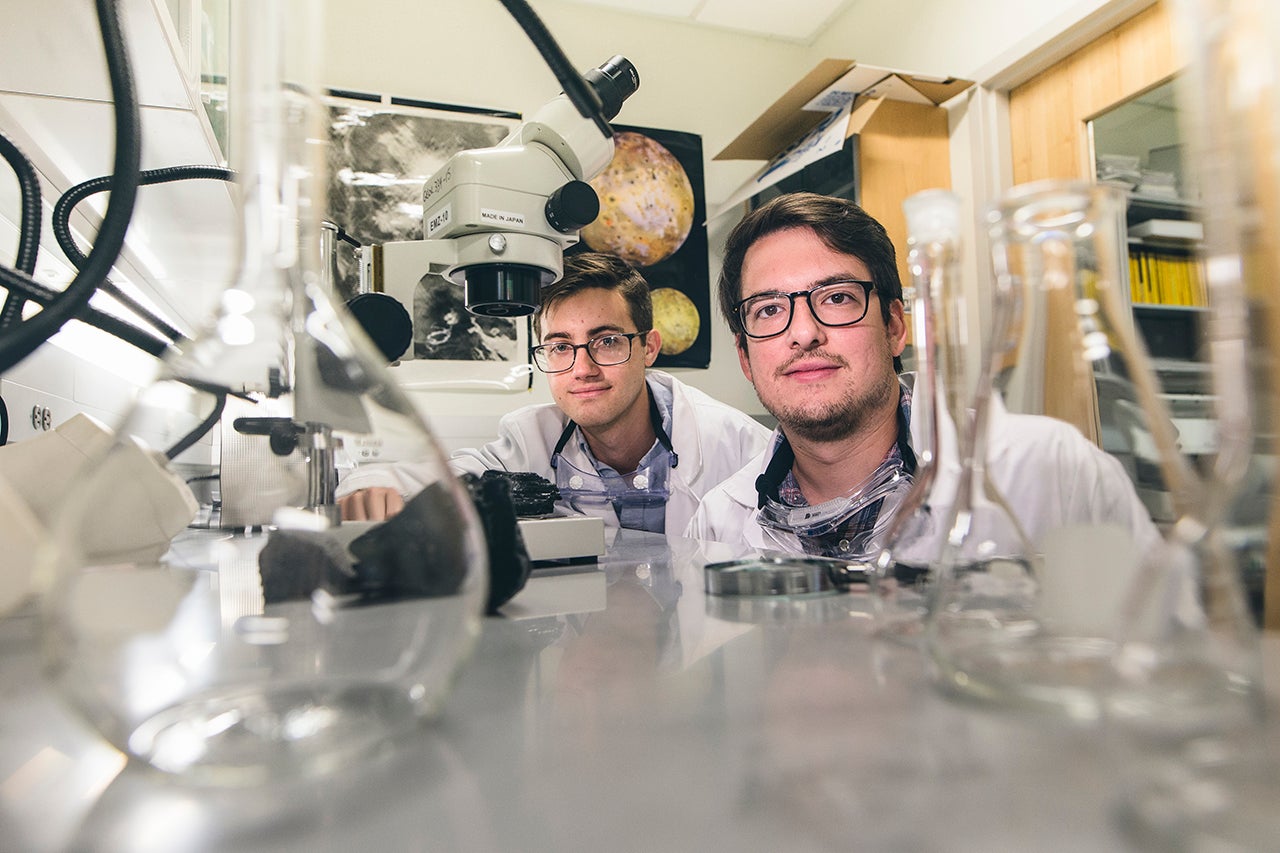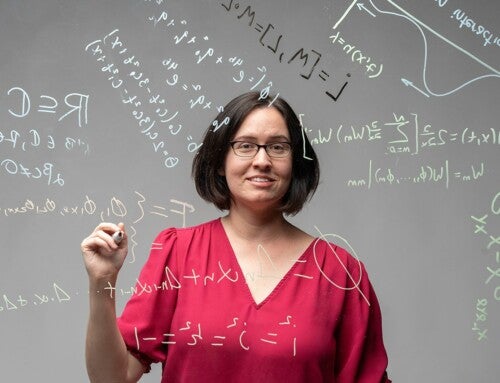Most people look at a rock and see, well, a rock. Senior geology majors Michael Schwartz (right) and Dylan McLane (left) see a whole other world.
“It’s just fascinating to me to see all the different ways minerals form and all the different shapes and colors, especially when you look at them under a microscope,” says McLane. “They’re like works of art. It gives you a deeper appreciation for where you are.”
But it’s an appreciation most people don’t have. Because geology is ubiquitous, it’s easily taken for granted. “It’s our home, it’s the planet we live on,” says Schwartz. “We walk on top of it every day, but a lot of people don’t care to know more. People see shiny minerals and think, Oh, that’s cool, but how did it form and where can you find it?”
To answer those and other questions, McLane and Schwartz spend a lot of their time inside the High-Temperature Geochemistry Lab on the second floor of the School of Sciences and Mathematics Building on Calhoun Street melting rocks to determine their chemical composition.
With the help of a SURF (Summer Undergraduate Research with Faculty) grant, the two spent time this past summer in New Mexico’s Rio Grande Rift near the Four Corners to collect samples of ancient lava flows, which have an unusual diversity of compositions for such a small area.
“We’re trying to figure out what kind of earth processes made them all different,” says Schwartz, who’s from Greenwood, S.C. “It can give us a history of what’s happened in the region and what could happen in the future. We don’t really know what goes on with deep-earth processes like magma chambers. Nobody has done studies in this area since the ’80s. We’re trying to take what they’ve done and go a step further.”
With 18 volcanoes classified as “very high” threats, the U.S. is one of the most volcanically active countries in the world, according to the U.S. Geological Survey – yet they’re still a big mystery. Geologists are still trying to figure out, for instance, why Yellowstone can produce very dangerous and explosive rhyolite lavas in one eruption and less dangerous fluid basalt in the next. This study will help answer some of these kinds of questions.
“This is a real-world scientific research project, and they’re both very dedicated to this project,” says John Chadwick, associate professor of geology and their mentor. “They’ve been involved from the sample collection in New Mexico to the grueling and detailed lab work, and now the data analysis. They are discovering something new to science, and perhaps helping us understand a little bit better how volcanoes work.”
Schwartz and McLane presented their discoveries at the annual American Geophysical Union conference in Washington, D.C., this past December, the largest annual gathering of geologists in the world. Next up: graduate school, for which they’re well-prepped.
Getting to form close working relationships with top professors was a big reason why McLane and Schwartz both wanted to come to the College. “At a bigger college, you’d probably need to be studying for your master’s to do the same kind of work we’re doing now,” says McLane, who’s from Lake Elsinore, Calif. “You have access to these graduate-level opportunities here as an undergraduate.”
That includes getting to use “really cool acids, like hydrofluoric acid,” to determine the major elements, says Schwartz. “We just have to be careful not to spill any,” he adds with a smile. “The dean’s office is right underneath us, so that wouldn’t be good.”
Featured image: Michael Schwartz and Dylan McLane in the geology lab. (Photo by Gately Williams)




